Abstract
Several viruses were categorized on the basis of their ability to spread from cell to contiguous cell and form plaques in the presence of antiviral antibody. Herpes simplex virus, cytomegalovirus, and vaccinia, measles, and foamy viruses were able to spread in the presence of neutralizing antibody, whereas coxsackievirus, encephalomyocarditis virus, vesicular stomatitis virus, mumps virus, and simian virus 5 failed to spread. A detailed study of one of these virus groups (simian foamy viruses) suggested that the ability of these viruses to spread from cell to cell in the presence of antiviral antibody, the failure of antiviral antibody and complement to lyse infected cells, and the poor induction and relative resistance of these viruses to the antiviral action of interferon contribute to the persistent nature of this infection.
Full text
PDF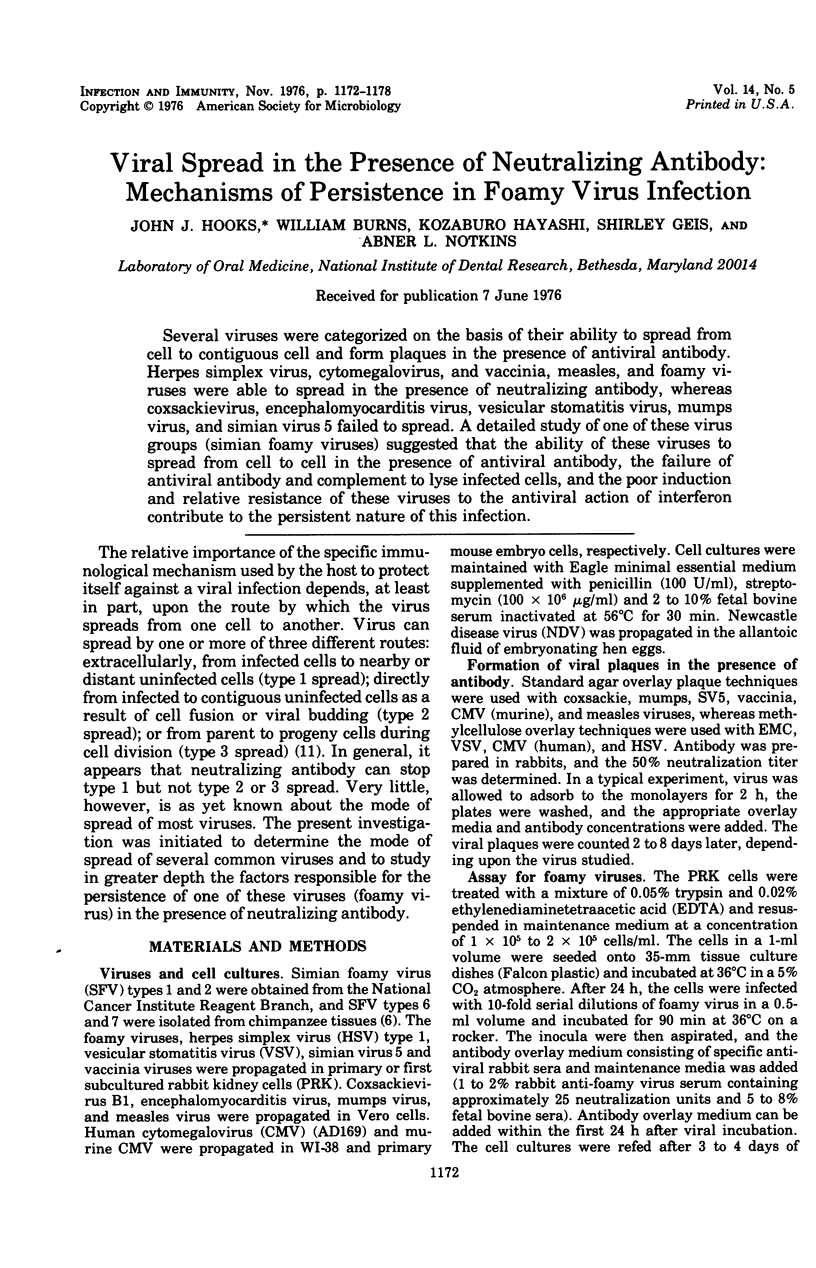
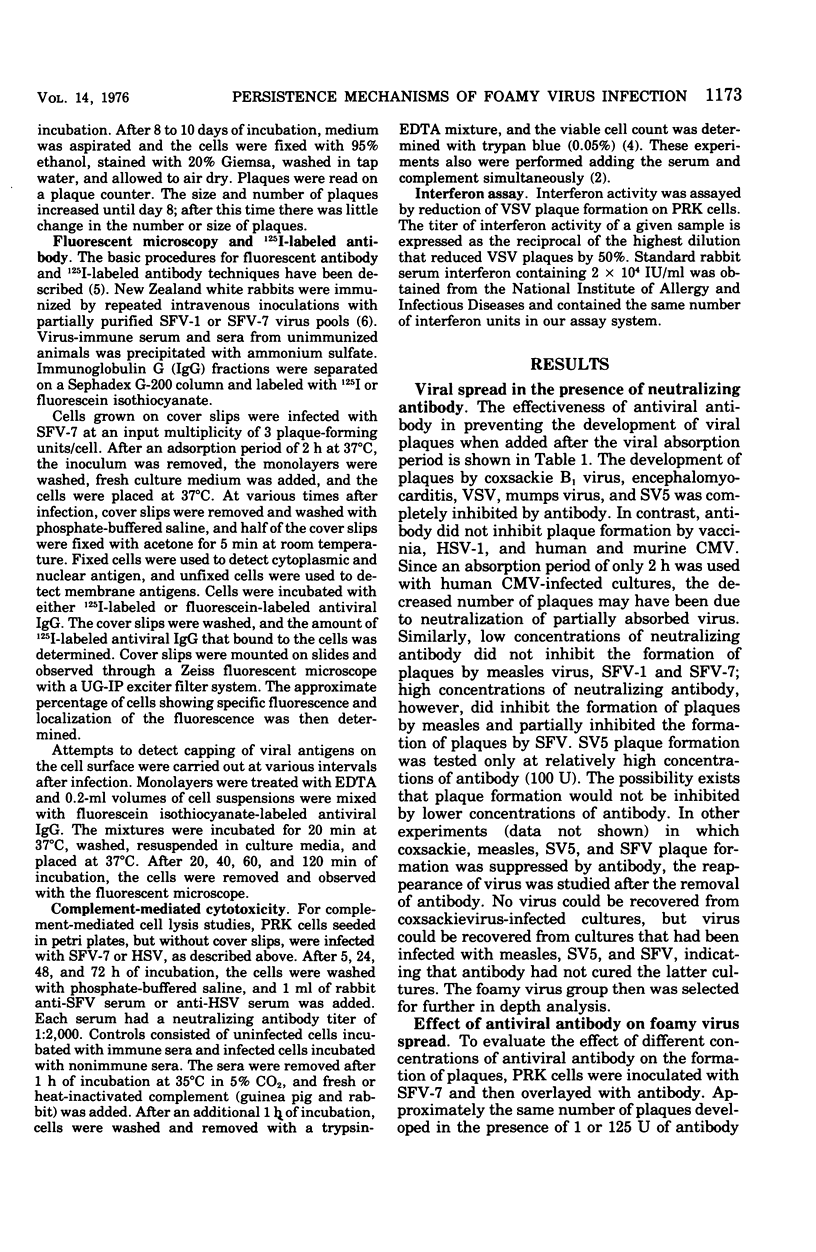
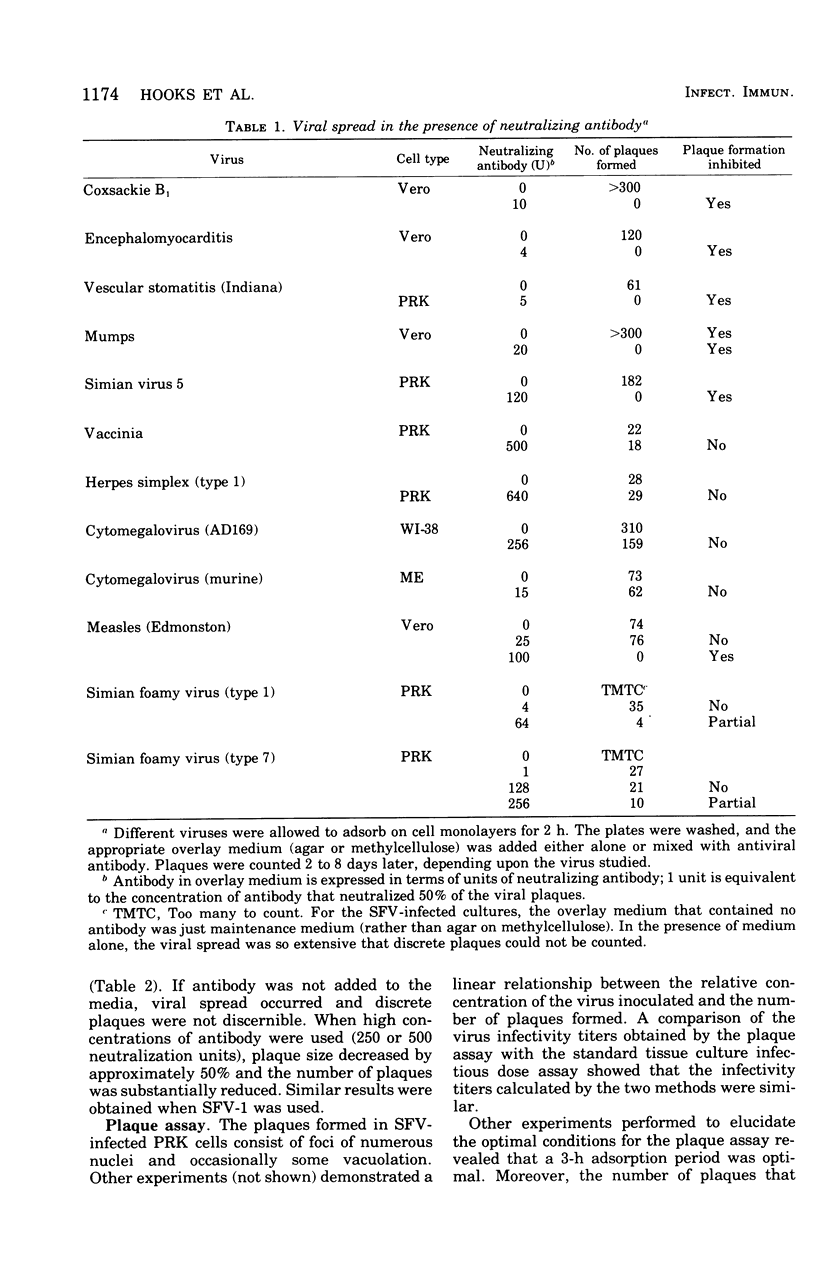
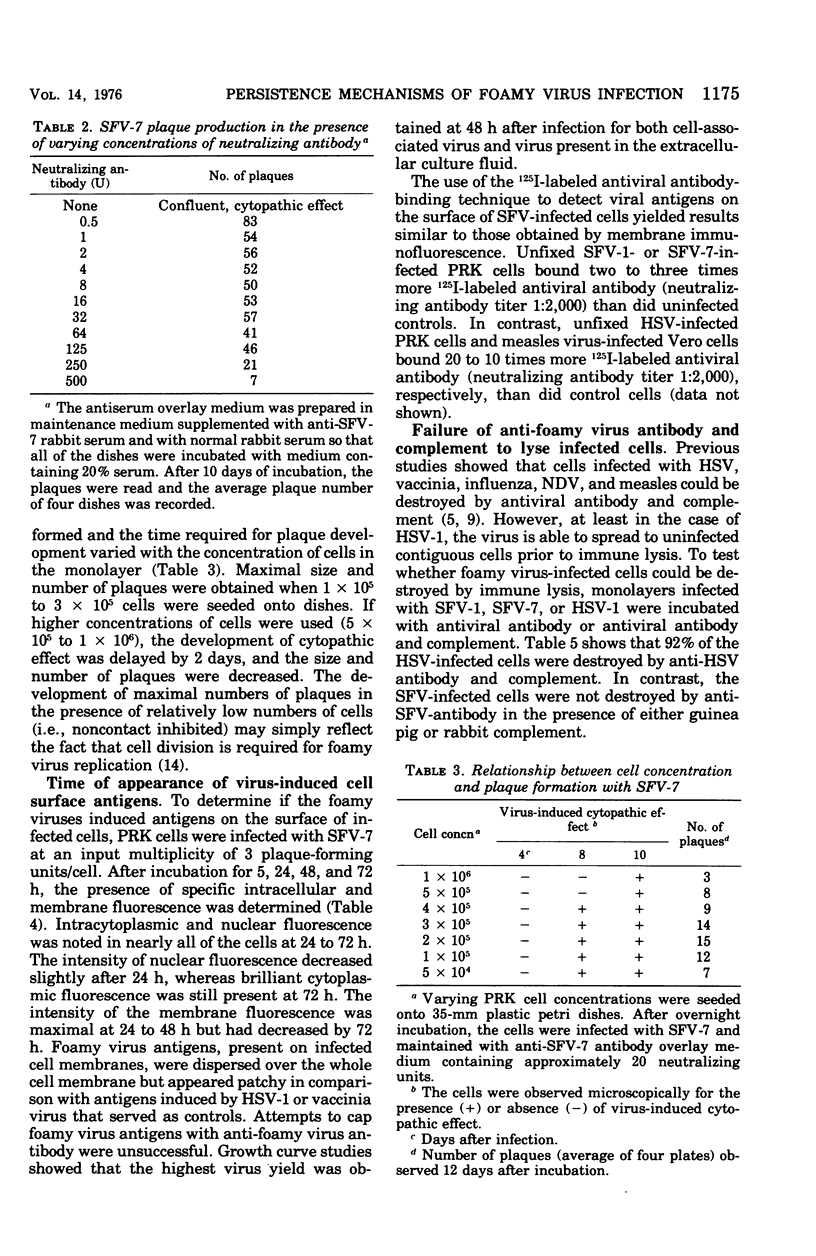
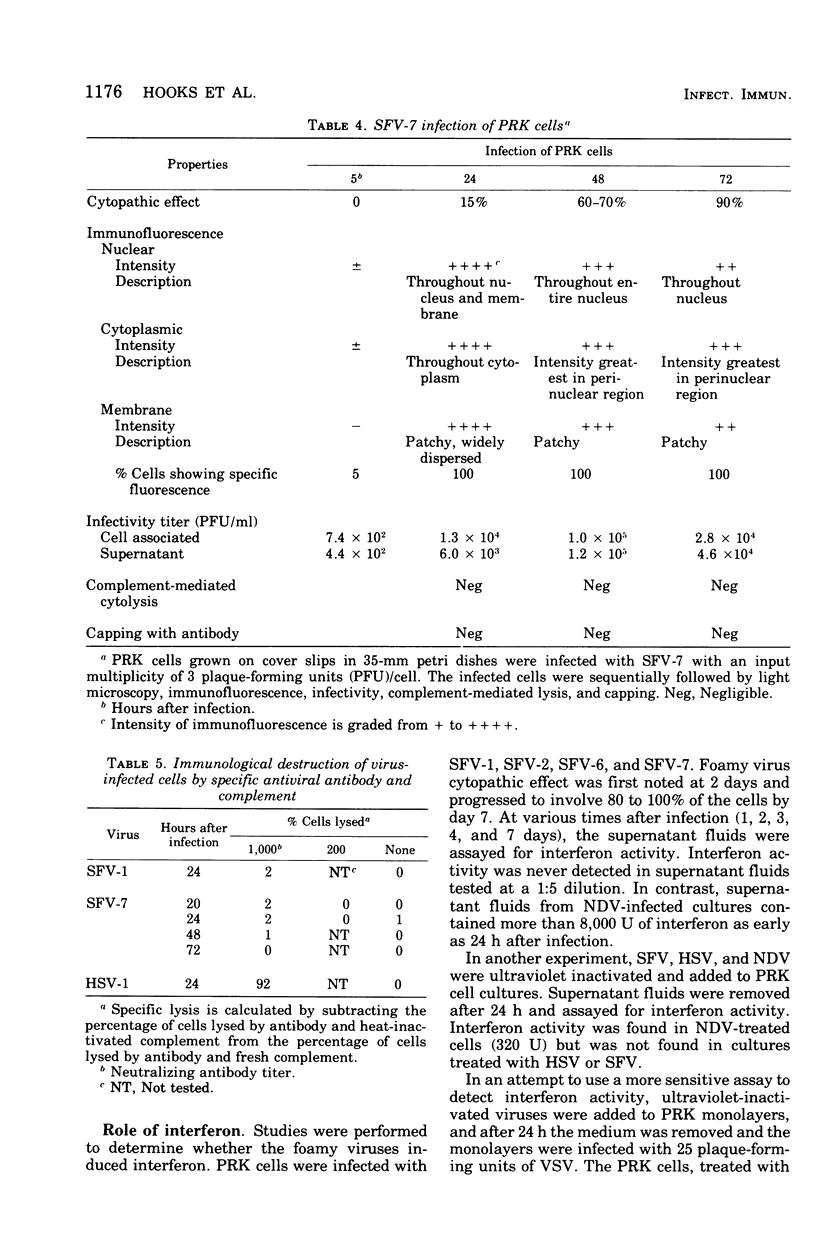
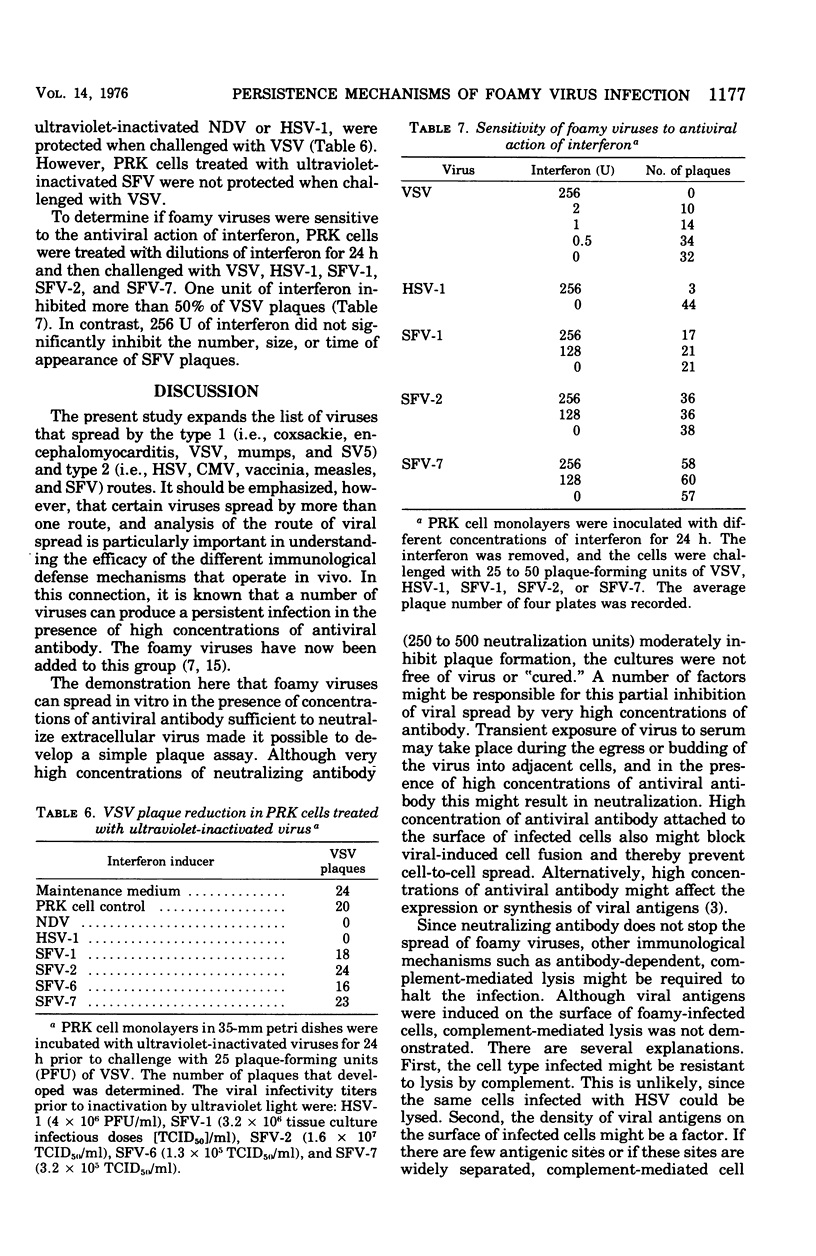

Selected References
These references are in PubMed. This may not be the complete list of references from this article.
- Allison A. C. Immune responses in persistent virus infections. J Clin Pathol Suppl (R Coll Pathol) 1972;6:121–131. [PMC free article] [PubMed] [Google Scholar]
- Brier A. M., Wohlenberg C., Rosenthal J., Mage M., Notkins A. L. Inhibition or enhancement of immunological injury of virus-infected cells. Proc Natl Acad Sci U S A. 1971 Dec;68(12):3073–3077. doi: 10.1073/pnas.68.12.3073. [DOI] [PMC free article] [PubMed] [Google Scholar]
- Detrick-Hooks B., Borsos T., Rapp H. J. Quantitative comparison of techniques used to measure complement-mediated cytotoxicity of nucleated cells. J Immunol. 1975 Jan;114(1 Pt 2):287–290. [PubMed] [Google Scholar]
- Hayashi K., Niwa A., Rosenthal J., Notkins A. L. Detection of virus-induced membrane and cytoplasmic antigens: comparison of the 125I-labeled antiviral antibody binding technique with immunofluorescence. Intervirology. 1974;2(1):48–51. doi: 10.1159/000149404. [DOI] [PubMed] [Google Scholar]
- Hooks J. J., Gibbs C. J., Jr, Cutchins E. C., Rogers N. G., Lampert P., Gajdusek D. C. Characteization and distribution of two new foamy viruses isolated from chimpanzees. Arch Gesamte Virusforsch. 1972;38(1):38–55. doi: 10.1007/BF01241354. [DOI] [PubMed] [Google Scholar]
- Hooks J. J., Gibbs C. J., Jr The foamy viruses. Bacteriol Rev. 1975 Sep;39(3):169–185. doi: 10.1128/br.39.3.169-185.1975. [DOI] [PMC free article] [PubMed] [Google Scholar]
- Joseph B. S., Oldstone M. B. Immunologic injury in measles virus infection. II. Suppression of immune injury through antigenic modulation. J Exp Med. 1975 Oct 1;142(4):864–876. doi: 10.1084/jem.142.4.864. [DOI] [PMC free article] [PubMed] [Google Scholar]
- Lodmell D. L., Notkins A. L. Cellular immunity to herpes simplex virus mediated by interferon. J Exp Med. 1974 Sep 1;140(3):764–778. doi: 10.1084/jem.140.3.764. [DOI] [PMC free article] [PubMed] [Google Scholar]
- MOLLER E., MOLLER G. Quantitative studies of the sensitivity of normal and neoplastic mouse cells to the cytotoxic action of isoantibodies. J Exp Med. 1962 Mar 1;115:527–553. doi: 10.1084/jem.115.3.527. [DOI] [PMC free article] [PubMed] [Google Scholar]
- Notkins A. L. Immune mechanisms by which the spread of viral infections is stopped. Cell Immunol. 1974 Mar 30;11(1-3):478–483. doi: 10.1016/0008-8749(74)90045-8. [DOI] [PubMed] [Google Scholar]
- Parks W. P., Todaro G. J. Biological properties of syncytium-forming ("foamy") viruses. Virology. 1972 Mar;47(3):673–683. doi: 10.1016/0042-6822(72)90557-0. [DOI] [PubMed] [Google Scholar]
- Swack N. S., Hsiung G. D. Pathogenesis of simian foamy virus infection in natural and experimental hosts. Infect Immun. 1975 Sep;12(3):470–474. doi: 10.1128/iai.12.3.470-474.1975. [DOI] [PMC free article] [PubMed] [Google Scholar]


